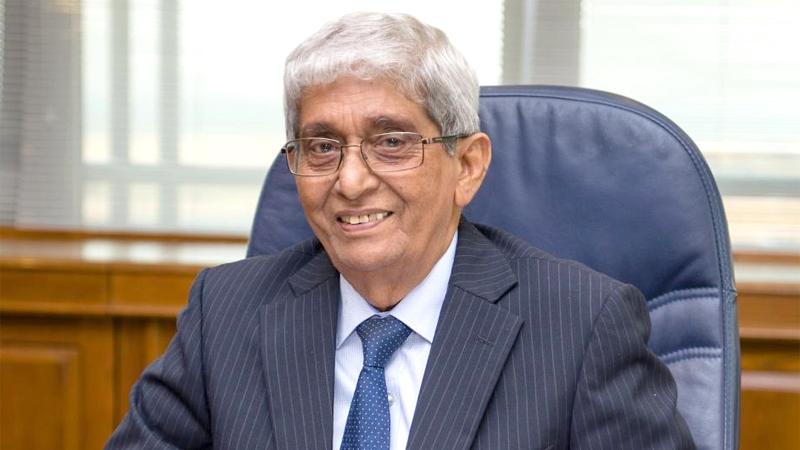
Sri Lanka will have positive news on contingency funding soon as discussions on swap arrangements with regional partners are in progress, said Central Bank Governor Prof. W.D. Lakshman. He was addressing the media on the monetary policy stance of the bank last week.
“Negotiations on contingency funding is in progress with certain regional countries and the latest is with partners in the Middle East,” the Governor said.
The Central Bank and the Government continue to engage with investment and lending partners to secure foreign financing and remain committed to honouring foreign currency debt service obligations on time.
Recently, the Central Bank entered into a bilateral currency swap arrangement with the People’s Bank of China (PBOC) amounting to CNY 10 billion (equivalent to approximately US dollars 1.5 billion).
Contingency funding has also been sought with Bangladesh following the recent visit by Prime Minister Mahinda Rajapaksa to Dhaka. When asked about a funding program with the IMF, the Governor said an emphatic no and reiterated the policy of the government to focus on non debt creating foreign inflows.
“Sri Lanka has not discussed a funding program with the IMF except for certain technical assistance,” the Governor said.
However, economists warned that given the fast shrinking foreign reserves the country will have to seek funding assistance from the international donor soon. The gross official reserves were estimated at US dollars 4.1 billion (excluding the swap facility with the PBOC), with an import cover of 3 months, at end March 2021. The Monetary Board of the Central Bank decided to maintain the Standing Deposit Facility Rate (SDFR) and the Standing Lending Facility Rate (SLFR) of the Central Bank at their current levels of 4.50 per cent and 5.50 per cent.
The Board arrived at this decision after carefully considering the macroeconomic conditions and expected developments on the domestic and global fronts.
The Board remains committed to maintaining the low interest rate structure, thereby ensuring continued support for a sustained economic recovery, in the context of the prevailing low inflation environment and well anchored inflation expectations.
The global economy is expected to recover faster than expected, supported by policy stimulus measures and the rollout of Covid-19 vaccines As per the World Economic Outlook (WEO) of the International Monetary Fund (IMF) in April 2021, global growth in 2020 was estimated to have recorded a lower than expected contraction of 3.3 percent, reflecting the faster recovery of economic activity during the second half of 2020 underpinned by extraordinary policy support.
Global growth projections were revised upwards to 6.0 percent in 2021 and 4.4 per cent in 2022. The pace of economic recovery varies across regions and countries, reflecting the differences in the speed of vaccine rollout, the degree of economic policy support, and structural features.
The regulator notes that the economy has rebounded from the effects of the pandemic and is poised to record a growth rate between 5.5 to 6 percent this year.
The economy contracted by 3.6 percent in 2020, lower than the Central Bank’s initial projections.
Despite the second wave of the pandemic the economy grew by 1.3 per cent in the last quarter of 2020 from a year earlier.
The merchandise trade deficit continued to narrow during January 2021, while preliminary data for February 2021 showed a further reduction in the trade deficit, driven by a larger contraction in expenditure on imports over earnings from exports. Workers’ remittances continued to record a healthy growth thus far in 2021 and this momentum is expected to continue in the remainder of the year.
The tourism sector is expected to recover gradually with the opening of the borders with the rollout of vaccinations locally and globally, the bank observed.
Although the Sri Lankan rupee experienced some volatility recently, the continuation of the existing restrictions on non-essential imports and certain foreign exchange outflows, among others, is expected to help cushion pressures in the domestic foreign exchange market.
Nevertheless, some upward pressure on yields on government securities was observed recently, in contrast to monetary policy expectations. Thus, the Central Bank reiterates the necessity to maintain the low interest rate structure, amidst the significantly high excess liquidity in the domestic money market, thereby facilitating the take-off of domestic investment.
Credit to the private sector expanded notably thus far in 2021, reflecting the impact of growth supportive policies Growth of credit extended to the private sector gathered pace in February 2021. This momentum is expected to continue, supported by low lending rates, surplus liquidity in the domestic money market and the expected rise in lending to micro, small, and medium enterprise (MSME) sector.
Inflation is expected to remain subdued in the near term and any upward pressures over the medium term could be mitigated, to a large extent, by the envisaged supply side improvements.
However, the bank noted that pressures on inflation could emerge over the medium term due to the envisaged improvements in aggregate demand conditions and the projected recovery in global commodity prices, among others.
Taking into account the domestic and global economic fronts the Monetary Board of the Central Bank decided to maintain the Standing Deposit Facility Rate and the Standing Lending Facility Rate at their current levels of 4.50 per cent and 5.50 percent.
